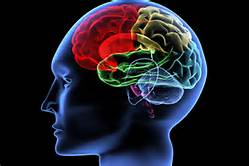I recently read an article about researchers at the University of Minnesota finding a way to reverse memory loss in lab mice. This piqued my curiosity since we have learned that memory is processed in several areas of the brain such as the prefrontal cortex, temporal and parietal lobes, cerebellum, amygdala, and hippocampus. Alzheimer’s disease (AD) is a hot topic of conversation with the large population of baby boomers being afflicted with this degenerative memory disease. There is a plethora of research being conducted on AD, however, none have been as promising as the recently published work of Dr. Karen Ashe.
 Karen Ashe, MD, an Alzheimer’s researcher at the University of Minnesota, has discovered two key components of dementia since 2005. Her first research discovered a gene, Tau, which caused tangles in the brain associated with AD. She found that when Tau goes errant it will cause cell death and memory loss. In this finding they discovered the natural enzyme called Caspase-2 was causing Tau to behave abnormally. Dr. Ashe’s latest research introduced a drug to cut the Tau enzymes in lab mice. In doing so, the drug intervention repaired the damaged connections between neurons, which resulted in restored memory in the impaired mice. Ultimately, the goal of Dr. Ashe’s research is to provide a drug that would block Caspase-2 and prevent the Tau gene from going awry, preventing cell death and memory loss.
Karen Ashe, MD, an Alzheimer’s researcher at the University of Minnesota, has discovered two key components of dementia since 2005. Her first research discovered a gene, Tau, which caused tangles in the brain associated with AD. She found that when Tau goes errant it will cause cell death and memory loss. In this finding they discovered the natural enzyme called Caspase-2 was causing Tau to behave abnormally. Dr. Ashe’s latest research introduced a drug to cut the Tau enzymes in lab mice. In doing so, the drug intervention repaired the damaged connections between neurons, which resulted in restored memory in the impaired mice. Ultimately, the goal of Dr. Ashe’s research is to provide a drug that would block Caspase-2 and prevent the Tau gene from going awry, preventing cell death and memory loss.
So, what is Alzheimer’s disease and what effects does it have on the brain and memory? AD is an irreversible, progressive disorder in which neurons deteriorate, resulting in the loss of cognitive functions (alz.org, n.d.). AD damages the hippocampus, making it difficult to form new memories and learn information. Semantic memory, stored in the temporal lobe, and language decline along with the ability to recognize familiar faces. Patients may have difficulty judging distance and three dimensions, recalled from the parietal lobe. As the disease spreads to the frontal lobes, especially the prefrontal cortex, they may experience difficulty with organizing, planning, and decision making. Procedural memory from the cerebellum, along with attention, language, movement, and emotional declines persist. As the portions of the brain begin to atrophy due to degenerative destruction of the cells, the emotional memory from the amygdala is affected. This destruction has been traced to two separate proteins.
The cells within a patient who was diagnosed with AD typically have tangles and plaques. The tangles are the Tau proteins discussed earlier. Plaques are deposits of protein fragments called beta-amyloid that build up in between nerve cells (alz.org, n.d.). As we age, these plaques and tangles are normal. However, in AD patients they develop an excessive amount. Eventually, this atrophy seems to cause cell death and disruption, ultimately affecting memory, judgment and reasoning, movement, coordination, and pattern recognition (alz.org, n.d).
According to the Alzheimer’s Association, AD is the sixth leading cause of death in the United States (alz.org, 2016). This is why the latest research by Karen Ashe, M.D. is so important for the 5.4 million people who currently suffer from AD (alz.org, 2016.). Although it may take a decade or more before this type of drug can be given to patients afflicted with this progressive disease, it is a step in a positive direction.
Lerner, M. (2016, October 11). Alzheimer’s researchers at University of Minnesota reverse memory loss in mice. Star Tribune, retrieved from http://www.startribune.com/alzheimer-s-researchers-at-university-of-minnesota-reverse-memory-loss-in-mice/396739231/
What is Alzheimer’s. (n.d.) retrieved from http://www.alz.org/alzheimers_disease_what_is_alzheimers.asp#
2016 Alzheimer’s Disease Facts and Figures. (2016) retrieved from http://www.alz.org/facts/overview.asp


